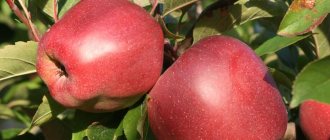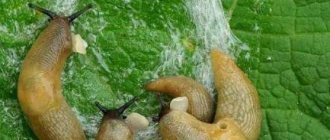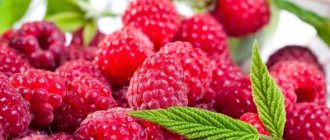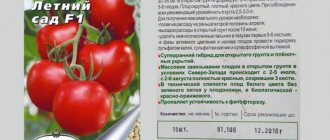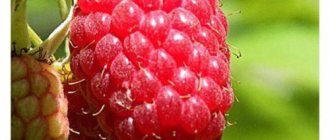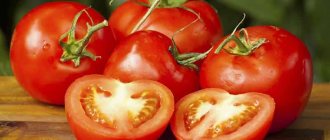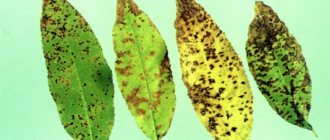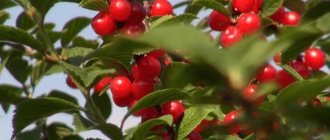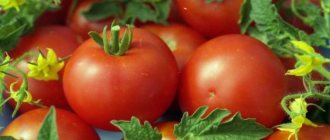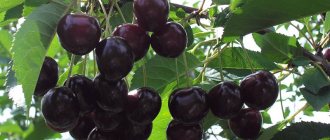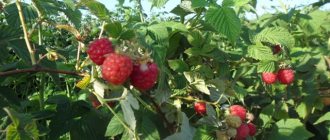Everything new is well forgotten old. This applies not only to inventions, but also to varieties of fruit-bearing trees. A hundred years ago you could see cherry orchards at every step. Now there are fewer and fewer of them. But in gardens and on personal plots, slender beauties with sweet red berries are sure to show off. Breeders are constantly inventing new hybrids that are characterized by frost resistance and abundant fruiting. Shpanka cherry is one of the old, time-tested varieties. There are different types of this variety, adapted for cultivation in different regions of the country.
Historical reference
The Shpanka variety was first mentioned 200 years ago. It combines the qualities of several plants growing in different regions. The first trees of this species appeared in the gardens of Ukraine. They appeared thanks to the natural cross-pollination of cherries and sweet cherries.
Sprouts began to gain popularity in the southern regions. In a short time, the variety began to be cultivated in Moldova and the Krasnodar Territory. Currently, trees can be found in regions with harsh climates: in the Moscow region, Siberia, and the Urals. Such relocation became possible thanks to the improvement of the hybrid. He acquired frost resistance and endurance.
Find a place on your plot for the Shpanka hybrid cherry variety
If the goal is not to collect a decent harvest of cherries as soon as possible, you should try growing the Shpanka cherry variety in the garden. This cherry appeared thanks to Ukrainian folk selection as a result of crossing cherries and cherries, therefore in the description of the Shpanka cherry variety and in the photo there are common features of both. Shpanka can most often be found in Ukrainian gardens, but in Russia and Moldova the variety has also gained recognition.
Characteristics of the variety
Due to the fact that the species has existed for several centuries and has repeatedly undergone selection changes, it is called a “folk variety”. The tree can reach 6 meters in height. It has a round, not very thick crown.
Shpanka belongs to the duki category, as it is a hybrid of cherry and sweet cherry. It retains the specific distinctive features of these plants
The variety does not belong to the early-fruiting category. The first harvest appears only 5-6 years after planting. If you make a rootstock, the berries will set by the 3rd year of cultivation. The bark is dark brown on old branches and light on young ones. The shoots are located from the trunk at right angles. They often break off. The reason may be: a bountiful harvest, careless berry picking or strong winds.
The plant has large dark green leaves with pink stems. They are pointed towards the edge, and a light coating is noticeable along the edge. In spring, the tree is covered with large white flowers collected in inflorescences. In the fall they grow into large, juicy, dark burgundy berries. Their skin is thin but elastic, and the flesh is dense and sweet.
Since the Shpanka cherry variety originated from one of the types of cherries, it bears fruit in the form of a cluster. Berries appear on annual shoots. Breeders are constantly improving the variety. Now there are trees that can easily tolerate harsh climatic conditions. Shpanka does not grow only in the Far North.
The productivity of the plant increases every year. It reaches a special blossoming and a record number of berries by the age of fifteen.
Plant hardiness
Regardless of the variety of Spanka, it tolerates drought well and is not afraid of a long absence of moisture. There are differences between species. Some plants can survive forty-degree frosts, while others are able to grow and develop only in the southern regions. Shpanka is not afraid of pests and diseases to which other plant varieties are susceptible. To avoid problems, you can treat trees for preventive purposes.
From flowering to harvest
The plant has below average self-fertility, so it is recommended to plant pollinators nearby. Varieties such as Stoykaya or Griot Ukrainian are suitable for this role. Cherries begin to bloom and bear fruit early, but this depends not only on the variety, but also on the climate. In the southern regions, trees become covered with inflorescences and bear fruit at the end of June. In the middle zone, the berries ripen in late July. Harvesting must be done en masse as soon as the fruits reach ripeness, otherwise they will fall off.
Productivity
The first berries begin to appear on young trees 5-7 years after planting. One plant can produce 35-50 kilograms of fruit. Productivity depends on the variety and age of the tree. A plant that has reached 15-18 years old can produce about 60 kilograms of berries per season.
What are cherry fruits used for?
Shpanka is quite sweet, so it is pleasant to eat it fresh. The berries are also suitable for canning. They make preserves, compotes, jams and even homemade wines. Due to the weak skin, cherries cannot be transported over long distances.
When processing, it is necessary to take into account that a large amount of hydrocyanic acid is concentrated in cherry pits. It is recommended to remove them before preparing winter preparations.
Shpanka cherry - an excellent harvest without much effort
The tree grows up to 6 meters. The spherical crown is not dense. Thin branches are located horizontally or at an obtuse angle relative to the trunk. The tree bark is dark brown. The leaves are large, elliptical in shape, reaching 8 cm in length. Cherry fruits are round, dark red in color, sometimes brownish, and weigh 5 grams. Berries hang from the branches in garlands. The light yellow flesh has a sweet and sour taste. Ripening time is the third ten days of June - mid-July. Seedlings begin to bear fruit after the sixth year of life. The annual harvest is up to 50 kilograms per tree. Shpanka has good frost resistance. This variety easily withstands frosts up to 30 degrees. Therefore, it has become widespread both in Ukraine and Moldova, as well as in the central zone of Russia and the Middle Volga region. However, Shpanka cannot withstand the harsh Ural winters. Breeders are constantly moving in this direction. Let us note the successful solutions in adapting the beloved hybrid throughout Russia.
Every year pleases with a rich harvest
Table: the most famous types of Shpanka
Table: strengths and weaknesses of Shpanka cherries
Variety varieties
There are a large number of varieties of Shpanka, bred through selective breeding. Before making a choice, you need to understand the characteristics. The main attention should be paid to frost resistance and productivity. A description of the Shpanka cherry and its varieties allows you to make the right choice.
| Name | Characteristics |
| Shpanka Bryansk | This species begins to bear its first fruits 6 years after planting. The trees grow tall and have a rounded crown. The berries reach four grams. Harvesting can begin in early July. With proper care, gardeners get up to 30 kilograms of berries from one tree. The taste of the fruit is bright and rich with a slight sourness. The berries are red. They are perfect for storing for the winter and transporting short distances. The variety is frost-resistant and is not afraid of diseases to which the species is susceptible. |
| Early | The trees reach a height of up to four meters. The first harvest is harvested 5 years after planting. The fruits reach full maturity at the end of June. Each berry reaches 5 grams. From an adult tree you can collect 40-50 kilograms of fruit per season. Frost resistance is average, so the variety is widespread in Moldova and southern Ukraine. The fruits tolerate transportation well. |
| Large | This variety belongs to the dessert category. Large berries reach 6 grams. The pulp is dense and sweet. The berries are not suitable for transportation. They can be eaten fresh or canned. |
| Kursk | Frost-resistant variety that can easily tolerate temperatures down to -40. The fruits have a small mass, from 2 to 4 grams. They are bright red with a sweet taste. The berries completely lack the usual sourness. |
| Shimskaya | The tree reaches four meters in height. The first harvest can be harvested after 4 years. The berries have a deep burgundy color and pink flesh. They are quite large, up to 5 grams. The fruits are sweet and sour with a fresh taste. The tree has high frost resistance, so it takes root well and bears fruit in the northern regions. It produces berries up to 25 years of age. Each tree is capable of producing 50 kg of fruit. |
| Donetsk | Already 3 years after planting, Donetsk Shpanka begins to bear fruit. She is not afraid of frost and drought. The berries reach 10-12 grams and have a dark scarlet color. The annual harvest can reach 50 kilograms from each tree. The berries grow in clusters. They have a slight sourness. |
| Dwarf | The height of dwarf trees is only 2 meters. They can tolerate thirty-degree frosts. The plant produces large scarlet berries. With proper care, you can collect up to 35 kilograms of fruit from each tree. The plant has found distribution in central Russia. |
| Krasnokutskaya | Most often, Shpanka Krasnokutskaya can be found in the North Caucasus. The plant begins to bear fruit only 7 years after planting. The berries reach a weight of 4 grams. They cannot be transported and must be processed immediately. |
Advantages and disadvantages of the variety
The description of the variety includes both positive and negative characteristics. For those who decide to start growing cherries, you need to know exactly what to expect from the plant.
Positive qualities include:
- not afraid of prolonged absence of moisture;
- the berries have a pleasant sweet taste with a slight sourness;
- consistently high productivity;
- resistance to species diseases;
- early ripening of berries;
- long fruiting period, up to 25 years.
Shpanka has a number of minor disadvantages. Trees begin to bear fruit only after 6-7 years. In the case of a rootstock, the harvest can be obtained in 2-3 years. The berries are not suitable for long-term transportation. They must be recycled immediately after removal. The tree is very fragile, and branches can break due to the weight of the fruit, strong winds, or careless picking of berries.
Features of cultivation
During planting, the root collar should be level with the ground.
Shpanka is planted in the spring, because in the fall the tree usually does not have time to fully take root. The planting hole has been prepared since the fall. It is dug with a diameter of 60-80 cm and a depth of 50-80 cm. If the groundwater level is high, you need to lay drainage - 10-20 cm of crushed stone, broken brick or something similar. After it has been dug up, fertile soil is prepared for planting from 3 buckets of plain soil, 2 buckets of humus and 250 g of superphosphate. You can also add a little potassium sulfate (100 g). Now the hole is filled 2/3 with this soil and left until spring.
Important!
During planting, you need to make sure that the root collar is level with the ground!
In the spring, the planting hole, dug and almost completely filled with earth, is well compacted and saturated with melt water. Before planting, the seedling is inspected for damage and if there is any, they are cut off (if these are roots) and the cut areas are treated with garden varnish. Plant the tree according to the usual pattern - on a mound of earth, straightening the roots. After planting, the soil is compacted and watered with 3 buckets of warm water.
An already planted tree needs care.
- Watering is carried out up to 5 times per season, abundantly. A tree needs 3-5 buckets of water, depending on its age.
- Loosening the root zone is necessary so that the roots have enough oxygen. 2-3 times per season is enough - spring, summer, autumn. After loosening, you can mulch the ground.
- Weeds are removed from the root zone, because they are most often the cause of diseases and pests.
- From 3 years after planting they begin to feed the tree. In autumn - organic. 1-2 buckets are enough for digging the tree trunk circle. In the spring, nitrogen, and in the summer, phosphorus and potassium mineral fertilizers will not hurt.
- Pruning is required annually. In spring or autumn, when there is time, it is necessary to cut off all dry, damaged, diseased branches. The crown is also thinned out every year so that there are not too many branches. If this is not done, harvesting will be problematic.
- For the winter, the tree can be mulched and the trunk wrapped, but this is not a mandatory procedure.
How to plant correctly
In order for a tree to grow strong and healthy, several factors must be taken into account: lighting, saturation of the soil mixture and proximity to other plants. Planting timing and proper care are also of great importance.
Features of choosing planting material
The plant must be chosen to be healthy, without visible damage and with a developed root system. One or two year old seedlings are best suited for planting. In order for the tree to take root well, it must be placed in cold water for several hours. A growth stimulator added to it will strengthen the roots and give them a good start.
Cherry care
It is recommended to water cherries abundantly during flowering. If there is insufficient rainfall in the region, then at least 4-5 buckets of water must be poured under the root. It needs to be left out and placed in the sun to warm up.
The tree needs feeding. The best time for this is early spring, when the snow has just melted. Cherries are great for organics. It is recommended to water it with a solution of water and chicken droppings or mullein. This mixture will allow the plant to produce green mass and strengthen it. Before and after flowering, you also need to water the trees with a potassium-phosphorus mixture.
Cherries need to be specially prepared for winter. It is hilled up, watered heavily, and then the soil in the root zone is generously mulched with humus. In winter, trees are threatened by rodents. To prevent them from harming the plant, the trunks must be wrapped with roofing material or covered with spruce branches at ground level. A mesh is also often used for protection. Many gardeners set traps or leave poisonous substances.
In spring and autumn, it is imperative to prune the trees, ridding them of dry, broken or damaged branches.
Features of planting and care
The stone fruit variety Shpanka prefers light, loose soils with neutral acidity. It is better to choose well-lit areas with groundwater below 1.5 meters.
The pit for planting cherries is prepared in advance, 2-5 weeks in advance. They dig it in accordance with the norm, 60-70 centimeters wide and 40-50 deep. The holes are filled with soil mixed with humus and phosphate-potassium fertilizers. On the day of planting, take the top nutrient layer of soil and pour a mound in the center of the hole. A cherry seedling is placed on it. After this, the roots begin to fall asleep, not forgetting about deepening the root collar. It should not be 5-6 centimeters above the ground level.
After filling the hole, press the soil well and water the bushes. The tree trunk circle is mulched with a layer of sawdust or humus.
Caring for the Shpanka hybrid includes regular procedures:
- trimming the crown for its formation and renewal;
- watering, 5-6 times in the dry season;
- fertilizing with organic and mineral fertilizers;
- loosening the soil around the trunk;
- mulching.
It is necessary to prune a tree, especially since its branches often break. In spring and autumn, damaged shoots are removed. Old ones are cut out to increase crop yield. Young shoots are not shortened when fruiting begins. For a 9-year-old tree, crown thinning is applied, cutting off diseased, poorly developed shoots.
In arid areas, mulching is carried out on snow, then more moisture will be retained in the soil. In the fall, a layer of mulch is sealed by digging up the tree trunk circle. Throughout the summer, the area around the tree trunk should be kept clean, and the soil should be kept loose. Every year in the spring they fertilize with mullein or bird droppings, diluting them in water in a ratio of 1:5 and 1:12, respectively.
All types of work are carried out to ensure that the tree develops and delights with tasty fruits.
How to protect a plant from diseases and pests
Shpanka is quite resistant and is not afraid of diseases to which other varieties of cherries are susceptible. But to avoid problems, it is necessary to carry out prevention at the first signs of disease. To do this, you need to remove fallen leaves in the fall and burn them so that the infection does not spread. Damaged or infected shoots are pruned. Before the sap begins to flow in the spring and after the leaves fall in the fall, trees must be treated with fungicides.
Most often, cherries are exposed to several main diseases:
- If dark spots begin to appear on the berries and then spread, it means they are damaged by fruit rot. The fungicide “Topaz” can help against this disease.
- The appearance of yellow spots on the leaves is an indicator of scab. Due to this disease, the berries do not develop and fall green. Spraying with Bordeaux mixture will help get rid of the infection.
- Anthracnose manifests itself as multiple white spots on the fruit that quickly darken. The tree needs to be treated with the fungicide "Poliram".
- If the leaves curl and begin to fall off, then the plant has been infected by black aphids. It is urgently necessary to treat it with Fitoverm.
- Holes in the fruit and damage to the pulp indicate the presence of cherry flies. “Kemifos” will help against this pest.
- Damaged buds, flowers and leaves are the work of the weevil. The beetle must be shaken off the branches and collected, and the tree must be sprayed with Fufanon.
Plants must be regularly inspected for diseases and pests in order to take adequate measures in time. Reviews from experienced gardeners indicate that preventive spraying allows you to avoid problems and preserve the harvest.
Benefits and harms of fruits
Not every cherry can be called healing, but Shpanka is distinguished by these qualities. It contains a large number of useful vitamins and microelements. Shpanka serves for rejuvenation, due to its property of improving blood circulation and strengthening capillaries.
It is recommended to include cherries in the diet during exacerbation of bronchitis and problems with the cardiovascular system. The berries have low calorie content, so they are suitable for diets. The only contraindication for consuming cherries is personal intolerance or the presence of diathesis in a child. The benefits and harms of this product are incommensurable. It is highly fortified, tasty and differs in healing properties from representatives of a similar species.
It is not recommended to cook compotes and jam with seeds. They must be cleaned and thrown away so as not to harm the heart.
Spanka can be stored in the refrigerator for about a week. It should be dry. Washed berries spoil much faster. Shpanka can be dried and frozen for the winter. It makes excellent compotes and jams. Berries can only be thawed before use. It is suitable for desserts, baking and fresh consumption.
Reviews
Alexander, Novgorod region Shpanka shimskaya has been growing on our site for a long time. Cherry is resistant to frost, grows and bears fruit better on loamy soils. The fruits are large, red, beautiful in appearance, with good taste. What is also important is that the variety is early ripening, the berries ripen in early July.
Alena, Smolensk Usually there is a lot of Spanka, it is early, light, it tastes sour to us, especially if it grows in the shade, in rainy weather it can be watery, and rots on the tree. You can’t eat a lot of it, but it’s just right for preparations; I make compotes and jam from it.
Evgeniy, Kursk I like Shpanka for its unpretentiousness and resistance to disease. We had to wait quite a long time for the first harvest - 6 years, but it bears fruit every year, the berries ripen very early - already at the end of June.
Advantages and disadvantages
One of the reasons for choosing Shpanka cherries for growing in the garden is that varieties of the variety can:
- grow successfully in regions with hot and dry summers;
- tolerate frosts and temperature drops in winter down to -20 degrees;
- partially pollinate on its own;
- bear fruit at the end of June;
- consistently produce 35-40 kilograms of berries from one tree;
- resistant to diseases.
The disadvantages of the Shpanka variety include the fact that the berries are not stored for a long time and do not tolerate transportation well. During the growing season, the tree often suffers from strong winds. Its branches break off due to their fragility. Cherries also have weak bark, which cracks due to spring frosts and during cold winters.
The cherry-cherry hybrid has a number of advantages for which gardeners value it.
Advantages
- good winter hardiness (withstands sub-zero temperatures down to 30-35 degrees);
- resistance to major diseases (including coccomycosis and moniliosis);
- high taste qualities;
- drought resistance (for a long period of time Shpanka can do quite well without moisture);
- long fruiting;
- early berry ripening;
- productivity (up to 40-50 kg of tasty berries are harvested from an adult tree);
- the presence of different subspecies allows the hybrid to be grown in different climate regions.
An important advantage of the Shpanka variety is frost resistance, but at the same time, due to the early flowering of cherries, it is often threatened by return frosts. Inflorescences are damaged by frost, yield will be lower.
Note that breeders have bred several subspecies of Shpanka (they will be discussed below), which do not have some of the disadvantages inherent in the main hybrid. Thus, the berries of Shpanka Bryanskaya can be stored if appropriate conditions are created for up to 2-3 weeks, and the fruits of Shpanka Early can withstand transportation quite well.
